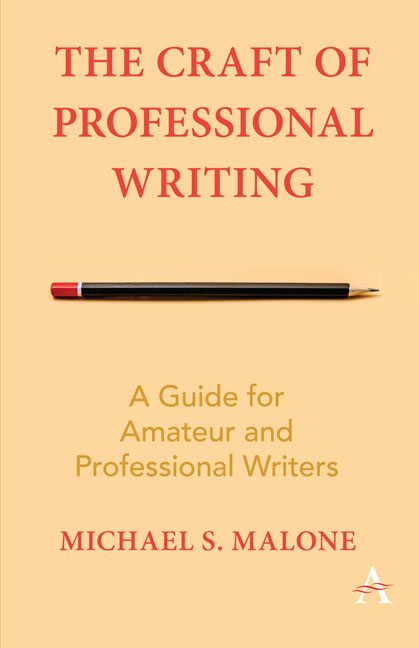Book contents
- Frontmatter
- Dedication
- Contents
- Introduction
- Part One Basics
- Part Two Corporate Careers and Disciplines
- Part Three Writing Careers in Media
- 8 Blogger
- 9 News Reporter
- 10 Critic
- 11 Essayist
- 12 Book Author
- 13 Television and Radio News Reporter
- 14 Screenwriter and Playwright
- 15 Fiction Writer and Novelist
- 16 Academic Track
- 17 Miscellaneous Writing
- Part Four The Work of Professional Writing
- Further Reading
- Suggested Assignments
- Index
14 - Screenwriter and Playwright
from Part Three - Writing Careers in Media
- Frontmatter
- Dedication
- Contents
- Introduction
- Part One Basics
- Part Two Corporate Careers and Disciplines
- Part Three Writing Careers in Media
- 8 Blogger
- 9 News Reporter
- 10 Critic
- 11 Essayist
- 12 Book Author
- 13 Television and Radio News Reporter
- 14 Screenwriter and Playwright
- 15 Fiction Writer and Novelist
- 16 Academic Track
- 17 Miscellaneous Writing
- Part Four The Work of Professional Writing
- Further Reading
- Suggested Assignments
- Index
Summary
In this chapter we look at two types of writing that appear in very different ways, but structurally, are nearly identical. Both are dialog- driven and both involve actors and actresses who perform the author's words and instructions. Where they differ has less to do with the writing and more with venue, modes of transmission, timeliness (one is “live,” the other not) and cost.
Screenwriting
What is screenwriting?
Screenwriting is designed to be viewed or heard, typically in a reading or performance that involves someone besides the author, and delivered by mechanical/ electrical/ digital means. Screenwriters produce screenplays, which are typically converted into working scripts, which are used to make motion pictures, Webcasts and television shows. Screenwriting can take the form of a monologue or dialog, and may or may not involve instructions to other creative personnel (instructions for camera shots, actor actions, etc. are usually reserved for the “shooting script.”
Screenplays share long- established formats that need to be followed by the screenwriter if she or he is going to have a chance at making a sale. You need to learn that format and be fluent in it. The world will not bend its century- old system to you; you must adapt to it.
Types of screenwriting
Though term “screenwriting” is typically associated with television or film, it actually encompasses just about everything creative you write for the electronic or digital media— even if it is just a few lines to announce the next show on the schedule. Here's some examples:
News stories— If you are writing for television or radio, the line between screenplay and script blurs. You are essentially writing copy, often under a tight deadline, to be read on- air. In this setting, you are often writing words to be either memorized and spoken, or to be put into a teleprompter to be read on air. Formatting is straightforward— it is rarely more than the news copy with the name of the reader(s) appended in a narrow margin, large font layout.
- Type
- Chapter
- Information
- The Craft of Professional WritingA Guide for Amateur and Professional Writers, pp. 209 - 220Publisher: Anthem PressPrint publication year: 2018



